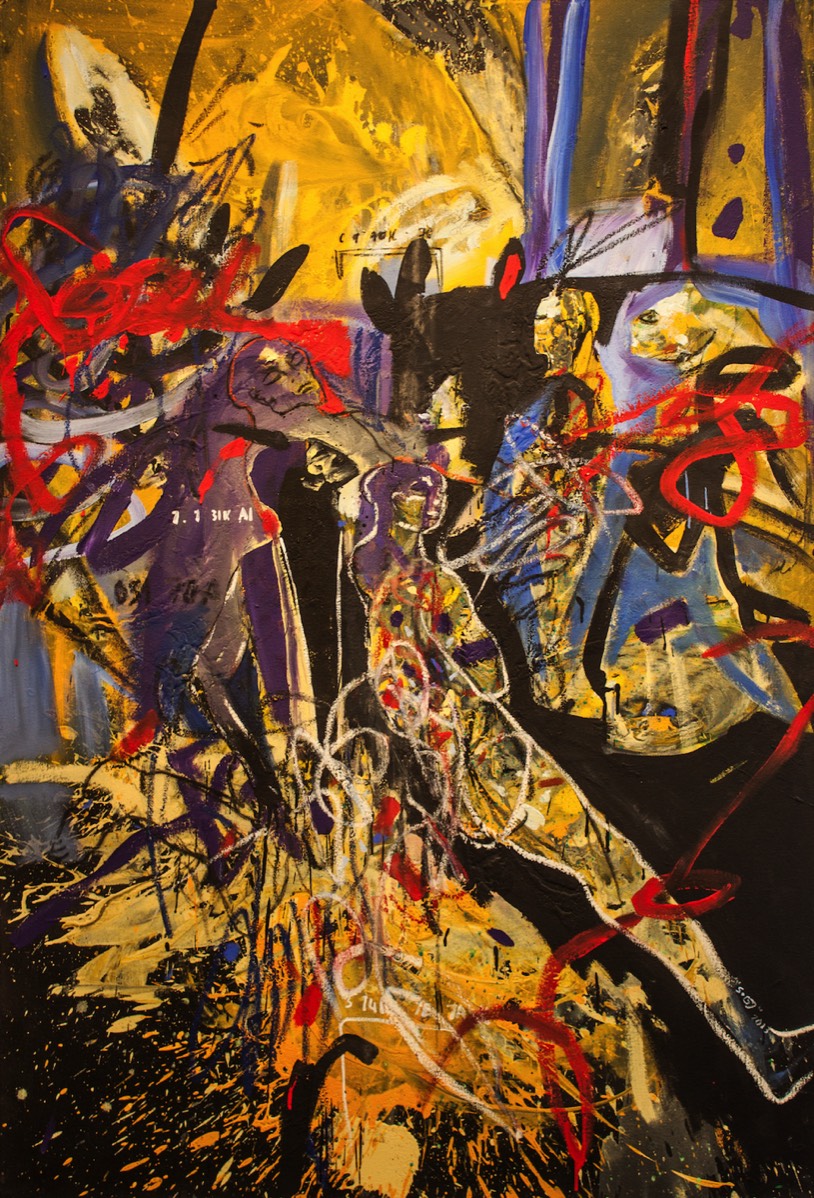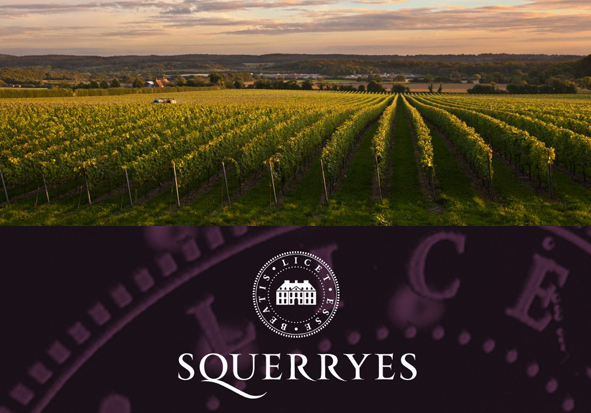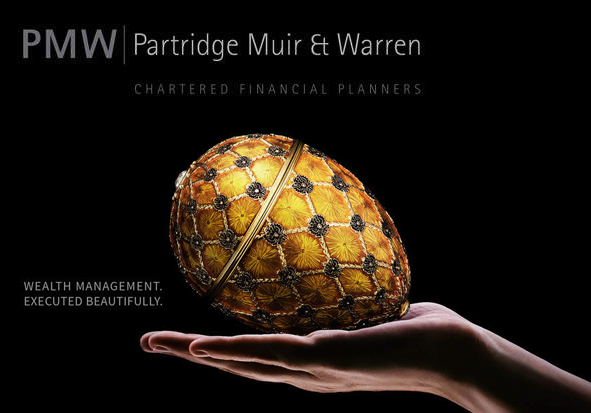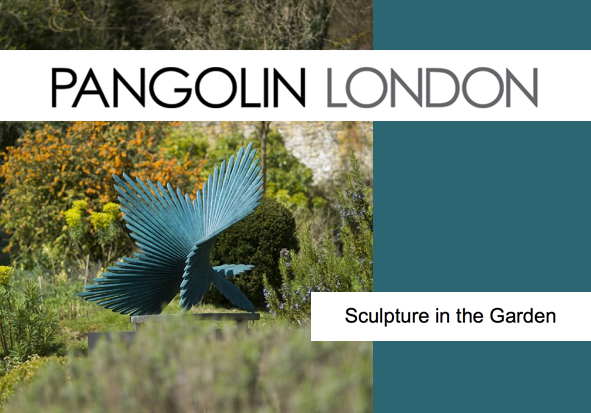ART
Surrey’s Premier Lifestyle Magazine
Light shines on the Dark Continent
The contemporary African art market is in a healthy state and collectors are flocking to London to discover it, as Andrew Peters finds out.

Soly Cisse, untitled 2014, oil on canvas.
Things are suddenly moving fast in Africa’s art market. After a decade in which Bonhams had Africa to itself, there are now suddenly three other international auction houses in the field.
Over the past few years, London has become established as a pioneer of African art. Last month saw the start of the season with Bonham’s biannual ‘Africa Now’ auction which began in 2008. With lots ranging from £2,000 to £120,000 plus, it is currently the largest of its kind following an explosion of interest in modern and contemporary art from Africa. Created by artists from a multitude of cultures, African contemporary art reflects the complex heritage of this dynamic continent and demonstrates tremendous potential for investment. Africa Now sales include the very best of post-war and contemporary art from across the African continent in various media, including painting, sculpture and drawing.
CNN recently reported that values in African art had grown between fivefold and tenfold during the last decade. Barnebys, the world’s leading art and auction search engine, echoes these findings. Unsurprisingly, Sotheby’s has now set up a contemporary African art department and is set to hold its first sale in 2017.
Christie’s recently held an exhibition of a South African sculptor in London when Stanislaw Trzebinski was invited to participate in a collaborative exhibition between Christie’s and the South African Southern Guild Gallery. The exhibition showcased some of South Africa’s top designers and artists.
In January this year, Phillips sent Arnold Lehman, former director of the Brooklyn Museum, on a recce to South Africa, generating a great deal of media attention.
South Africa’s strongest home based auction house, Strauss & Co, was headed by the legendary Stefan Welz, who unfortunately died this year. So the home team is having to scramble to meet this new threat from abroad: four hungry international auction houses. All of this new interest and energy is creating huge excitement in the two countries, South Africa and Nigeria, whose art dominates auction sales abroad. But the ripple effect is being felt in all of Africa’s 54 sovereign states.
How and why this sudden attention on Africa? The answer is, in part, that Bonhams, which has led the way and established an international market for contemporary African art, has been breaking world records for a decade. The work of the late Irma Stern – South Africa’s leading artist – would have commanded prices in the hundreds of thousands of pounds ten years ago; now her work is making millions. Her painting ‘Arab Priest’ made £3.1m at a Bonhams’ sale a few years ago. This dramatic rise in prices has been seen too with work from Jacobus Hendrik Pierneef, Gerard Sekoto and William Kentridge. The Ghanaian-born, Nigeria-based Professor El Anatsui dominates prices in North Africa. His bottletop tapestries command £1m plus figures in London and New York.
Giles Peppiatt of Bonhams holds eight of the ten world records for South African art and says of the African phenomenon: “The fact is that modern and contemporary African art is today one of the hottest properties on the art block. Africa is the new China when it comes to art. When the Tate, the Smithsonian and other similar institutions start putting on exhibitions of contemporary African art, then one knows that something strange and wonderful has occurred and that real change is in the air.”
Pontus Silfverstolpe of Barnebys adds: “The Romans had a phrase for this: ‘There is always something new out of Africa’. Today that new thing is art, and the scramble is to acquire it, as the educated view in the capitals of the world is that South African and African art is a bull market, with one’s investment liable to return a handsome profit in the years ahead.”
Of course, Picasso and many of his contemporary artists saw in Africa the wellsprings of their own creative drive. They acknowledged Africa’s creative genius and their work pays homage and tribute to it. Now African artists are pursuing some of that acclaim and the sums earned by those master artists whose names are household words.
Another significant factor in Africa’s art renaissance attracting attention is the new contemporary art museum being built on the Waterfront in Cape Town. The Zeitz MOCAA museum will be the biggest art museum in Africa and the gravitational pull of this huge new development will bring art tourists to South Africa for the first time. The Zeitz MOCAA Museum of Contemporary Art Africa is a major new cultural institution that will focus on collecting, preserving, researching and exhibiting cutting-edge contemporary art from Africa and its diaspora. It is a unique, not-for-profit partnership between the V&A Waterfront and Jochen Zeitz.
Zeitz MOCAA will be housed in the historic Grain Silo at the V&A Waterfront, with the V&A committing over R500 million to the development required for the establishment of the museum. This investment will further the development of art in Africa and acknowledges the important cultural and financial contribution the visual arts sector makes.
Considered by many to be the leading collector of contemporary art from Africa and its diaspora, Jochen Zeitz will commit his collection as the founding collection, underwrite the running costs of the museum and provide a substantial acquisition budget to allow it to acquire new important artworks over time to remain on the edge of contemporary cultural production. The museum will open to the public in early 2017.
In London and New York, the Africa 1:54 Contemporary Art Fair has also added to the buzz with galleries from the continent exhibiting some of their best new work. The Fair has grown from its inception in 2013 from 6,000 visitors to last year welcoming over 15,000. Touria El Glaoui, the Fair’s director, is glad that African galleries have a platform to sell (what amounts to 70 per cent of sales) to collectors abroad, but hopes for slower and more consistent growth to ensure it is not just a fad.
Interest is not merely confined to London. On November 17 in Paris, PIASA, one of France’s most distinguished auction houses, will hold its third sale of contemporary African art, ‘Origins and Trajectories’, featuring the work of 50 African artists. PIASA’s auction is part of a busy schedule in Europe for African contemporary art. After the 1:54 Fair and the AKAA Fair in November, 2017 will be very busy with an exhibition scheduled at the Foundation Louis Vuitton, and another at La Villette ‘Aperta Africa’, curated by Simon Njami of Revue Noire. The Paris Art Fair at Le Grand Palais in March will be dedicated to Africa.
France and Africa have a long-intertwined art history. As early as the time of the ‘cabinets de curiosité’, artefacts from Africa were collected as these objects were seen as symbols of the African culture. At the turn of the 19th and 20th century, the Surrealists and Cubists saw the intrinsic art value of these African artefacts. Today, classical African art remains a powerful component of the French art market, opening the way for the development of this new trade in contemporary African art being integrated into the global art market that still has its centre of gravity in Paris.
Refreshingly, fifteen African women artists will lead the sale in Paris and Christophe Person, head of strategy and development at PIASA, points out that women increasingly dominate this valuable and rapidly expanding market, achieving stronger prices than many male artists from the continent. He comments: “It surprises many people who are new to this market to find that contrary to popular perception it is women who are in the lead in contemporary African art. Their themes are universal and connect powerfully with international collectors. And the price their work commands is generally ahead of male artists on the continent.”
This success has been hard won on a continent where women are still engaged in a fight for equality, he adds. “The success of these women artists acts as a beacon of female emancipation in Africa.”
Names like the figurative South African artists Irma Stern and Marlene Dumas have, in the past 20 years, become well known to the collecting fraternity who have led the interest in contemporary African art and have bid keenly at auction to secure works by these two white daughters of Africa. Stern’s top work, titled ‘Arab Priest’, sold for £3m to the Qatari Government.
Africa’s women artists are countering the trend of female inequality, at least in the arts. In the 2014 African Art Market Report, of the seven top African artists listed, four were women. And some of these women are achieving prices in the millions for their work, namely Dumas and Stern.
• El Anatsui (Ghanaian, 1944)
• Mehretu Julie (Ethiopian, 1970) female
• Kentridge William (South African, 1955)
• Stern Irma (South African, 1894–1966) female
• Shonibare Yinka (Nigerian, 1962)
• Dumas Marlene (South African, 1953) female
• Mutu Wangechi (Kenyan, 1972) female
So the future looks bright for art from the Dark Continent as the market continues to go from strength to strength. Momentum is growing with international exhibitions and young artists showing at some of the major galleries.
Over the past few years, London has become established as a pioneer of African art. Last month saw the start of the season with Bonham’s biannual ‘Africa Now’ auction which began in 2008. With lots ranging from £2,000 to £120,000 plus, it is currently the largest of its kind following an explosion of interest in modern and contemporary art from Africa. Created by artists from a multitude of cultures, African contemporary art reflects the complex heritage of this dynamic continent and demonstrates tremendous potential for investment. Africa Now sales include the very best of post-war and contemporary art from across the African continent in various media, including painting, sculpture and drawing.
CNN recently reported that values in African art had grown between fivefold and tenfold during the last decade. Barnebys, the world’s leading art and auction search engine, echoes these findings. Unsurprisingly, Sotheby’s has now set up a contemporary African art department and is set to hold its first sale in 2017.
Christie’s recently held an exhibition of a South African sculptor in London when Stanislaw Trzebinski was invited to participate in a collaborative exhibition between Christie’s and the South African Southern Guild Gallery. The exhibition showcased some of South Africa’s top designers and artists.
In January this year, Phillips sent Arnold Lehman, former director of the Brooklyn Museum, on a recce to South Africa, generating a great deal of media attention.
South Africa’s strongest home based auction house, Strauss & Co, was headed by the legendary Stefan Welz, who unfortunately died this year. So the home team is having to scramble to meet this new threat from abroad: four hungry international auction houses. All of this new interest and energy is creating huge excitement in the two countries, South Africa and Nigeria, whose art dominates auction sales abroad. But the ripple effect is being felt in all of Africa’s 54 sovereign states.
How and why this sudden attention on Africa? The answer is, in part, that Bonhams, which has led the way and established an international market for contemporary African art, has been breaking world records for a decade. The work of the late Irma Stern – South Africa’s leading artist – would have commanded prices in the hundreds of thousands of pounds ten years ago; now her work is making millions. Her painting ‘Arab Priest’ made £3.1m at a Bonhams’ sale a few years ago. This dramatic rise in prices has been seen too with work from Jacobus Hendrik Pierneef, Gerard Sekoto and William Kentridge. The Ghanaian-born, Nigeria-based Professor El Anatsui dominates prices in North Africa. His bottletop tapestries command £1m plus figures in London and New York.
Giles Peppiatt of Bonhams holds eight of the ten world records for South African art and says of the African phenomenon: “The fact is that modern and contemporary African art is today one of the hottest properties on the art block. Africa is the new China when it comes to art. When the Tate, the Smithsonian and other similar institutions start putting on exhibitions of contemporary African art, then one knows that something strange and wonderful has occurred and that real change is in the air.”
Pontus Silfverstolpe of Barnebys adds: “The Romans had a phrase for this: ‘There is always something new out of Africa’. Today that new thing is art, and the scramble is to acquire it, as the educated view in the capitals of the world is that South African and African art is a bull market, with one’s investment liable to return a handsome profit in the years ahead.”
Of course, Picasso and many of his contemporary artists saw in Africa the wellsprings of their own creative drive. They acknowledged Africa’s creative genius and their work pays homage and tribute to it. Now African artists are pursuing some of that acclaim and the sums earned by those master artists whose names are household words.
Another significant factor in Africa’s art renaissance attracting attention is the new contemporary art museum being built on the Waterfront in Cape Town. The Zeitz MOCAA museum will be the biggest art museum in Africa and the gravitational pull of this huge new development will bring art tourists to South Africa for the first time. The Zeitz MOCAA Museum of Contemporary Art Africa is a major new cultural institution that will focus on collecting, preserving, researching and exhibiting cutting-edge contemporary art from Africa and its diaspora. It is a unique, not-for-profit partnership between the V&A Waterfront and Jochen Zeitz.
Zeitz MOCAA will be housed in the historic Grain Silo at the V&A Waterfront, with the V&A committing over R500 million to the development required for the establishment of the museum. This investment will further the development of art in Africa and acknowledges the important cultural and financial contribution the visual arts sector makes.
Considered by many to be the leading collector of contemporary art from Africa and its diaspora, Jochen Zeitz will commit his collection as the founding collection, underwrite the running costs of the museum and provide a substantial acquisition budget to allow it to acquire new important artworks over time to remain on the edge of contemporary cultural production. The museum will open to the public in early 2017.
In London and New York, the Africa 1:54 Contemporary Art Fair has also added to the buzz with galleries from the continent exhibiting some of their best new work. The Fair has grown from its inception in 2013 from 6,000 visitors to last year welcoming over 15,000. Touria El Glaoui, the Fair’s director, is glad that African galleries have a platform to sell (what amounts to 70 per cent of sales) to collectors abroad, but hopes for slower and more consistent growth to ensure it is not just a fad.
Interest is not merely confined to London. On November 17 in Paris, PIASA, one of France’s most distinguished auction houses, will hold its third sale of contemporary African art, ‘Origins and Trajectories’, featuring the work of 50 African artists. PIASA’s auction is part of a busy schedule in Europe for African contemporary art. After the 1:54 Fair and the AKAA Fair in November, 2017 will be very busy with an exhibition scheduled at the Foundation Louis Vuitton, and another at La Villette ‘Aperta Africa’, curated by Simon Njami of Revue Noire. The Paris Art Fair at Le Grand Palais in March will be dedicated to Africa.
France and Africa have a long-intertwined art history. As early as the time of the ‘cabinets de curiosité’, artefacts from Africa were collected as these objects were seen as symbols of the African culture. At the turn of the 19th and 20th century, the Surrealists and Cubists saw the intrinsic art value of these African artefacts. Today, classical African art remains a powerful component of the French art market, opening the way for the development of this new trade in contemporary African art being integrated into the global art market that still has its centre of gravity in Paris.
Refreshingly, fifteen African women artists will lead the sale in Paris and Christophe Person, head of strategy and development at PIASA, points out that women increasingly dominate this valuable and rapidly expanding market, achieving stronger prices than many male artists from the continent. He comments: “It surprises many people who are new to this market to find that contrary to popular perception it is women who are in the lead in contemporary African art. Their themes are universal and connect powerfully with international collectors. And the price their work commands is generally ahead of male artists on the continent.”
This success has been hard won on a continent where women are still engaged in a fight for equality, he adds. “The success of these women artists acts as a beacon of female emancipation in Africa.”
Names like the figurative South African artists Irma Stern and Marlene Dumas have, in the past 20 years, become well known to the collecting fraternity who have led the interest in contemporary African art and have bid keenly at auction to secure works by these two white daughters of Africa. Stern’s top work, titled ‘Arab Priest’, sold for £3m to the Qatari Government.
Africa’s women artists are countering the trend of female inequality, at least in the arts. In the 2014 African Art Market Report, of the seven top African artists listed, four were women. And some of these women are achieving prices in the millions for their work, namely Dumas and Stern.
• El Anatsui (Ghanaian, 1944)
• Mehretu Julie (Ethiopian, 1970) female
• Kentridge William (South African, 1955)
• Stern Irma (South African, 1894–1966) female
• Shonibare Yinka (Nigerian, 1962)
• Dumas Marlene (South African, 1953) female
• Mutu Wangechi (Kenyan, 1972) female
So the future looks bright for art from the Dark Continent as the market continues to go from strength to strength. Momentum is growing with international exhibitions and young artists showing at some of the major galleries.

Willie Bester (born 1956), Transition, painting mixed media, 1994. Private collection. Photo copyright: the artist
South Africa has a long tradition of creative practice. Some of the oldest art objects in the world were discovered within its provinces – excavations have found examples of Paleolithic cave paintings and jewellery items made from snail shells – while William Kentridge, Johannes Phokela and Francki Burger prove the strength of the cultural scene today.
This exhibition draws together items from across the centuries to document South Africa’s history in a powerful visual display. It not only pays testimony to problematic periods of colonialism and apartheid, but also celebrates the many different peoples who have contributed to the nation’s accomplishments.
It takes visitors from the earliest recovered object, a three-million-year-old pebble with facial features etched into it, to a recent video by Candice Breitz, a white South African artist who inserts herself as a minority figure into a popular TV soap about middle class black South Africans. At each stage, from antiquity to colonialism, through resistance to apartheid, and the tenuous transition to democracy, works of art from different periods of time are displayed together to provide new perspectives, challenging historical assumptions of the past.
Telephone: 020 7323 8299
Website: www.britishmuseum.org
South Africa: The Art of a Nation
This exhibition, now on at the British Museum, is not a catalogue of the country’s greatest hits. There is nothing by the darling of the South African art auctions, Irma Stern, or by Marlene Dumas, one of the most expensive living female artists. Here, the artists (an impressive bunch nevertheless) play second fiddle to the story being told.South Africa has a long tradition of creative practice. Some of the oldest art objects in the world were discovered within its provinces – excavations have found examples of Paleolithic cave paintings and jewellery items made from snail shells – while William Kentridge, Johannes Phokela and Francki Burger prove the strength of the cultural scene today.
This exhibition draws together items from across the centuries to document South Africa’s history in a powerful visual display. It not only pays testimony to problematic periods of colonialism and apartheid, but also celebrates the many different peoples who have contributed to the nation’s accomplishments.
It takes visitors from the earliest recovered object, a three-million-year-old pebble with facial features etched into it, to a recent video by Candice Breitz, a white South African artist who inserts herself as a minority figure into a popular TV soap about middle class black South Africans. At each stage, from antiquity to colonialism, through resistance to apartheid, and the tenuous transition to democracy, works of art from different periods of time are displayed together to provide new perspectives, challenging historical assumptions of the past.
essence info
The exhibition runs until 26 February 2017 at the British Museum, Great Russell Street, London WC1B 3DG.Telephone: 020 7323 8299
Website: www.britishmuseum.org
Mavros: adornment from Africa
The Patrick Mavros brand was founded 35 years ago when the then-soldier, Patrick, carved a pair of earrings for his wife, Catja. She wore them to the hair salon, where her hairdresser fell in love with them and instantly requested a pair for herself.
From this loving gift, the business was born into what is recognised today as a uniquely African and distinctively exotic, luxury jewellery brand. The Mavros sons, Alexander, Forbes, Patrick Jnr and Benjamin, are also all passionately involved in the business.
From day one the boys were engrossed in the workshop, experimenting with materials and designs: starting with heavy, rough-hewn rock crystals dug up from the farm, suspending them from fishing line for their adoring and patient mother to wear!
Marrying intricate craftsmanship with an intrepid family heritage, the Mavros family has not only designed some of the most extraordinary jewellery creations in Africa, but has also created around it an environment just as magical and bold.
At home, the workshops, family homestead, wildlife sanctuary and the studio are all built to form a small village on the family estate in the wild hills outside Harare in Zimbabwe.
From this loving gift, the business was born into what is recognised today as a uniquely African and distinctively exotic, luxury jewellery brand. The Mavros sons, Alexander, Forbes, Patrick Jnr and Benjamin, are also all passionately involved in the business.
From day one the boys were engrossed in the workshop, experimenting with materials and designs: starting with heavy, rough-hewn rock crystals dug up from the farm, suspending them from fishing line for their adoring and patient mother to wear!
Marrying intricate craftsmanship with an intrepid family heritage, the Mavros family has not only designed some of the most extraordinary jewellery creations in Africa, but has also created around it an environment just as magical and bold.
At home, the workshops, family homestead, wildlife sanctuary and the studio are all built to form a small village on the family estate in the wild hills outside Harare in Zimbabwe.

essence info
London Flagship Store, 104–106 Fulham Road, London SW3 6HSTelephone: 020 7052 0001
Website: www.patrickmavros.com



